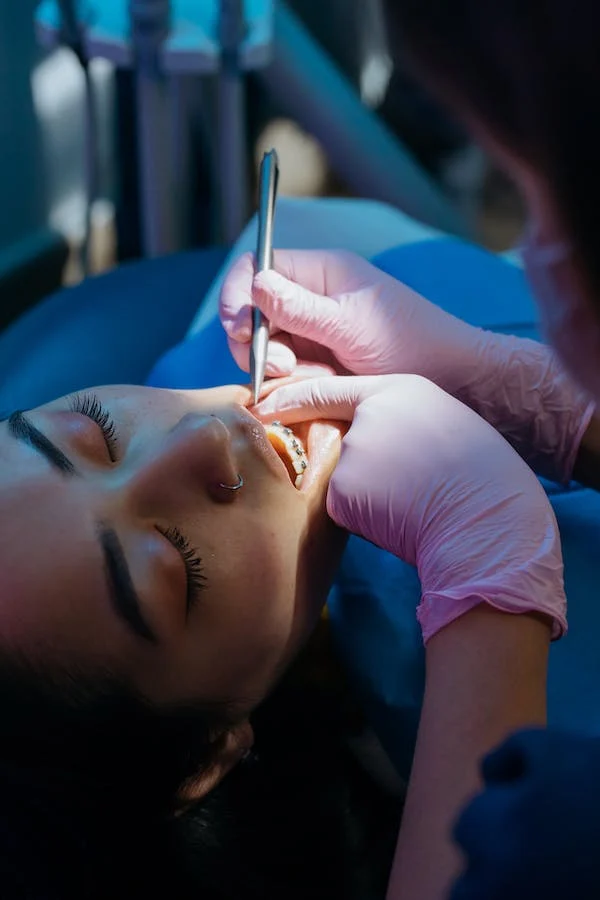The 7-Second Trick For Legacy Orthodontics
The 7-Second Trick For Legacy Orthodontics
Blog Article
Some Known Details About Legacy Orthodontics
Table of ContentsThe Ultimate Guide To Legacy OrthodonticsThe 3-Minute Rule for Legacy OrthodonticsGetting My Legacy Orthodontics To WorkWhat Does Legacy Orthodontics Do?Getting My Legacy Orthodontics To Work
In addition, we offer flexible treatment timetables, versatile payment alternatives and a fun, enjoyable experience.An orthodontist is a dentist educated to diagnose, prevent, and deal with teeth and jaw irregularities. They remedy existing problems and are trained to identify troubles that may create in the future. Orthodontists collaborate with people of all ages, from kids to adults. Individuals typically link a best smile with health.
Malocclusion, or misaligned teeth, can bring about dental problems, consisting of tooth decay, gum tissue disease, and tough or painful chewing. Not every person is birthed with straight teeth. If you have a bad bite or big areas in between your teeth, you may want to seek advice from a dental professional concentrating on orthodontic care.
The Only Guide for Legacy Orthodontics
( Photo Credit History: DigitalVision/Getty Images) Orthodontists make use of fixed and removable oral tools, like dental braces, retainers, and bands, to transform the setting of teeth in your mouth. Orthodontic therapy is for dental irregularities, including: Uneven teethBite problems, like an overbite or an underbiteCrowded teeth or teeth that are too much apartJaw misalignmentThe objective of orthodontic treatment is to improve your bite.
While you may assume of orthodontists as mostly for youngsters or young adults that need braces, they can fix oral issues at any type of age. Orthodontists go to college, dental college, and orthodontic college.
All orthodontists are dental professionals, but not all dental experts are orthodontists. Orthodontic residency programs use intensive, focused guideline for oral experts. They concentrate on 2 locations: Exactly how to correctly and securely relocate teeth How to properly lead growth in the teeth, jaw, and faceOnce an orthodontist has finished training, they have the choice to come to be board certified.
Rumored Buzz on Legacy Orthodontics
Malocclusion leads to tooth overcrowding, an askew jaw, or uneven bite patterns. Malocclusion is usually treated with: Your orthodontist attaches metal, ceramic, or plastic square bonds to your teeth.
If you have just small malocclusion, you may have the ability to make use of clear braces, called aligners, instead of traditional braces (https://www.awwwards.com/legacyortho/). Some individuals need a headgear to aid move teeth right into line with stress from outside the mouth. After braces or aligners, you'll need to put on a retainer. A retainer is a custom-made tool that keeps a knockout post your teeth in location.
They're usually utilized on kids. They can develop added room in the mouth without having to pull teeth. If you have a severe underbite or overbite, you could need orthognathic surgery (additionally called orthodontic surgical treatment) to extend or reduce your jaw. Orthodontists use cables, medical screws, or plates to sustain your jaw bone.
You may require to see an orthodontist if you have: Crowding or not adequate area for all of your teethOverbite, when your upper teeth come over your bottom teethUnderbite, when your bottom teeth are too much forwardSpacing or problems with gapsCrossbite, which is when your upper teeth fit behind your base teeth when your mouth is closedOpen bite or an upright gap between your front bottom and upper teethMisplaced midline, when the center of your bottom and top teeth do not align Fixing an oral malocclusion can: Make biting, chewing, and speaking easierImprove the symmetry of our face and your overall appearanceEase pain from temporomandibular joint disordersSeparate your teeth and make them simpler to clean, aiding protect against tooth decay or tooth cavities It's usually a dental expert who first notifications misaligned teeth throughout a regular examination.
How Legacy Orthodontics can Save You Time, Stress, and Money.

Throughout your very first orthodontic examination, you'll likely have: An oral examPhotos taken of your face and smileDental X-raysPanoramic (360 degree) X-rays of your face and headImpressions to create mold and mildews of your teethThese tests will help your orthodontist recognize just how to proceed with your treatment. braces. An orthodontist is a dental professional who's had training to treat your teeth and jaw
An orthodontist is focused on your bite, so something like a damaged tooth would be handled by a dental expert. Orthodontists are focused on your bite, or the means your teeth fit with each other, and the straightness of your teeth.
Ever asked yourself how celebs constantly seem to have perfectly aligned teeth? Orthodontists are dental professionals who concentrate on correcting abnormalities in the teeth and jaws.
Facts About Legacy Orthodontics Uncovered

, orthodontists have a varied toolkit at their disposal. These tried-and-true braces use a system of braces bonded to the teeth and connected by cables.
Clear aligners, like Invisalign, are a popular alternative for individuals seeking a more discreet therapy choice. These removable trays are tailor-made to considerably change the teeth's setting. Headgear may be used in conjunction with braces or aligners to apply added targeted forces, specifically for correcting jaw disparities. In instances of slim jaws, palatal expanders can be used to create room for correct tooth placement.
Report this page